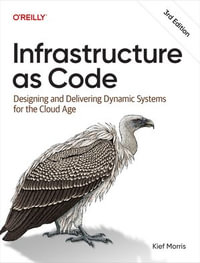
eTEXT
SRE with Java Microservices
eText | 27 August 2020 | Edition Number 1
At a Glance
eText
$53.89
or
Instant online reading in your Booktopia eTextbook Library *
Read online on
Desktop
Tablet
Mobile
Not downloadable to your eReader or an app
Why choose an eTextbook?
Instant Access *
Purchase and read your book immediately
Read Aloud
Listen and follow along as Bookshelf reads to you
Study Tools
Built-in study tools like highlights and more
* eTextbooks are not downloadable to your eReader or an app and can be accessed via web browsers only. You must be connected to the internet and have no technical issues with your device or browser that could prevent the eTextbook from operating.
ISBN: 9781492073871
ISBN-10: 1492073873
Published: 27th August 2020
Format: ePUB
Language: English
Publisher: O'Reilly Media, Inc.
Edition Number: 1
You Can Find This eBook In
This product is categorised by
- Non-FictionComputing & I.T.Computer ScienceComputer Architecture & Logic DesignParallel Processing
- Non-FictionComputing & I.T.Computer Programming & Software DevelopmentWeb Programming
- Non-FictionComputing & I.T.Computer ScienceSystems Analysis & Design
- Non-FictionComputing & I.T.Computer Programming & Software DevelopmentSoftware EngineeringSoftware Testing & Verification























